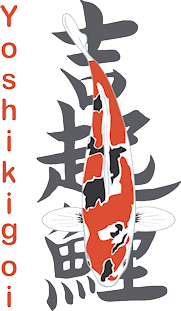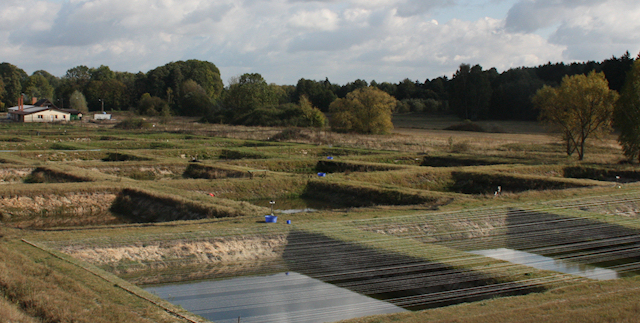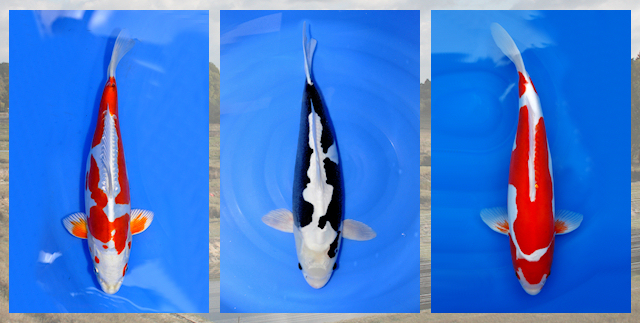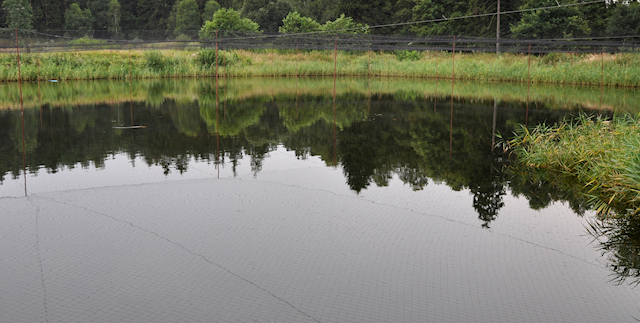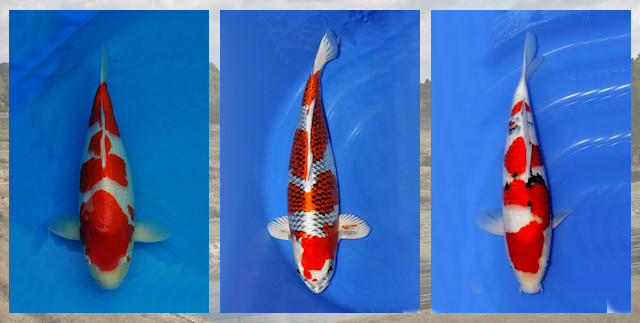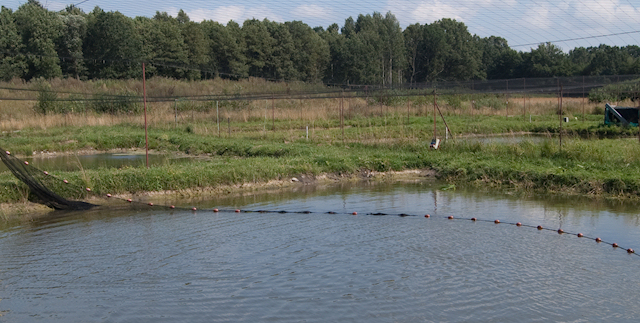After our last article of last week it has become clear how you can calculate how much body weight of Koi swims around in your pond.
The first question immediately was, how much food do I need to feed to get the most out of my Koi in terms of growth potential?
In this article I’m going to explane this matter a little deeper. If you want to read the whole story then keep an eye on the Koimagazines, because there is an very big article that Jos Aben wrote, in which he, among other things, explanes food and all that goes with it.
As soon as you have determined how much weight of Koi swims in your pond, it is important to know how much food you need.
Do not be alarmed when you start calculating because many people don’t feed half of what they actually would need to be feeding.
I’m going to take as an example a pond where i have a total ammount of 15 Koi swimming in. All of them all around 45 cm each. Per Koi you have an average weight of about 1.2 Kg, that means that there is about 18 Kg of weight of Koi in my pond.
At water temperatures of 19 to 20 degrees Celsius, 1 Koi is able to eat between 1-1.5% of body their body weight per day.
When the temperature of the water is 21 to 23 degrees Celsius, the same Koi can eat around 1.5-2% of their body weight of food per day.
But when the water temperature is between 23 and 25 degrees Celsius, the same Koi will eat between 3-3.5% body weight per day.
So when I take my pond it means that in my case at a temperature of 19 – 20 degrees my Koi can eat between 1 a 1.5% per day = 180 grams / 270 gram of food.
At 21 – 23 degrees this is between 270 and 360 grams.
If you then look at what the food range between 23-25 degrees should be, it means that every day 540 – 630 grams the Koi need to eat for an optimal growth!
PLEASE NOTE!
You cannot start calculating how much you need to feed tomorrow and put this ammount emmidiatly the day after tomorrow in your pond. There are a ew things you need to look at in advance.
In the beginning of the season you need to calculate (with possibly new purchased fish) how many Kg of Koi you have in your pond. It is extremely important that you start with a much lower weight of food. The filter is not setteled to break down this larger amounts of food. Therefore you need to let the filter grow slowly without having ammonia and nitrite spikes.
You need to start slowly from the beginning on and build up the ammount of food, this means that you start on day 1 for example with 30 grams of food, on day 2 you give them 35 grams and so on until you have reached the desired ammount of food. In this way the filter can easely grow along with the food supply.
It is VERY IMPORTANT to keep a close look on your water parameters! You should test every day if there is an increase of ammonia or nitrite. For this you can use a drip test set.
If you have a light increase in the ammonia ore nitrite level, stop increasing the amount that day and just feed the amount of the previous day. So DO NOT give them the desired 5 to 10 grams of extra that day. Look the next day if the ammonia level is back to normal. When this is, you can give them the extra 5 grams again. This needs to go on untill the maximum has been reached.
When do you know that is the maximum is reached?
Many people calulate how much food that they need to feed and assume that this is also the weight what can be fed. Nothing could be further from the truth. Because a large part of this process has also to do with the filter.
How much food can your filter handle?
Everyone has a different filter system so this means that the amount of food that your filter can handle is different for everyone. The only way to know how much food you filter can handle without problems, is to test this for yourself, by slowly going up in the amount of food and trying to get to the desired weight. The most important thing is that you check your parameters of the water very well every day! The maximum is achieved once the filter indicates that he is not capable any more to get rid of the waste product (increase ammonia and/or nitrite).
